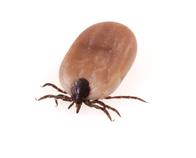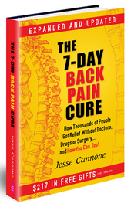|
Treating Tick Bites
Promptly and correctly treating tick bites is important to prevent Lyme disease. But even then you should be aware of the early signs of infection and know what to do about it.
Ticks are very common and becoming even more abundant with a warming climate. They occur especially in the spring months in areas of grass and bush. If you are traveling through areas of grass or bush inhabited by ticks you can help prevent being bitten by taking these simple precautions:
- tuck your pants into your socks so they will climb up the outside of your clothing
- wear light colored clothing so they can be more readily seen
- keep an eye on traveling companions to see if they have ticks on them
- do a thorough tick check when you arrive home
- be careful with clothing that may have ticks on it
They will get on a person and climb towards the head but will often attach before getting there. The tick will only stay attached to a body for about three days during which time it feeds on blood that it sucks from the victim. It swells up to several times its normal size and then drops off to lay its eggs and start the cycle again.
You want to remove them as soon as possible. Proper removal is by grasping them by the head as close to your skin as possible and pulling them straight out. You do not need to twist them or coat them with Vaseline or any such thing. A pair of fine tweezers is very helpful. You can also take a piece of thread and tie a simple granny knot around the ticks head and use the thread to pull it off. Do not grasp it by the body to pull it off. In doing so you could squeeze some of its stomach contents into the person thus increasing the chance of infection.
And if you do have one crawling on you don't panic. They will wander around for a long time before they dig in. In fact, it is kind of fun to watch them crawl up your hand then turn your hand so they are heading down. They will promptly turn around each time you do it and keep heading up hill - they are trying to find your head!
After the initial removal of the tick and treatment of the bite, if you suspect an infection or just want to play it safe, go to
Lyme Disease Alternative Treatments
to find what you can do for treatment.
|
Keep up to date with
valuable insights into
pain management via
a healthy lifestyle.
Receive the monthly
Natural Pain Relief
Guide Newsletter.
News articles, health
tips, specials, freebies.
Enter your email and name
in the form to the right.
|
|
|









New! Comments
Have your say about what you just read! Leave me a comment in the box below.